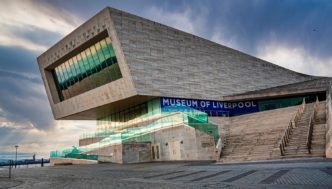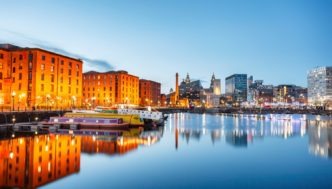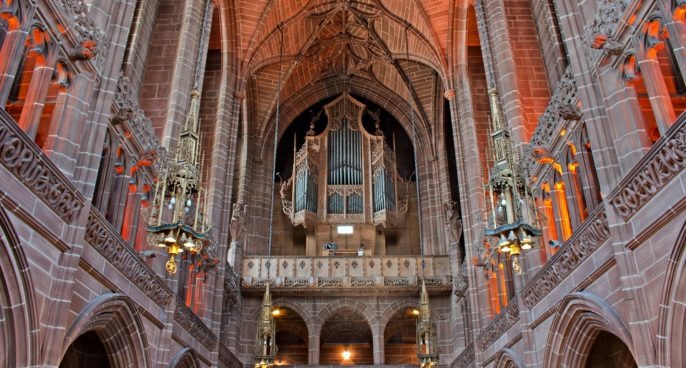
Liverpool is a city of culture, entertainment and history – it’s also home to some of the most fascinating architecture in the UK. So, if you’re visiting the city, it’s essential to look up and immerse yourself in the alluring history of Liverpool buildings.
With over 2,500 listed buildings, there’s a lot to see and admire while you stroll through the historic streets. Of course, many will already know Liverpool’s famous dock area, Royal Albert Dock. This spot is home to the largest collection of Grade I listed buildings in the UK, and a short walk from this area showcases some of Liverpool’s oldest buildings and heritage destinations.
There is so much unique architecture that the city has been used for numerous movie and TV series settings. It’s also doubled as other iconic locations such as New York, Chicago and even London.
Table of Contents
- 1 The history of Liverpool
- 2 The Three Graces
- 3 The Bluecoat – 1710s
- 4 The Liverpool Town Hall – 1750s
- 5 Liverpool Anglican Cathedral – 1900s to 1970s!
- 6 Liverpool Philharmonic Hall – 1930s
- 7 Rodney Street Georgian Townhouses – 1780s
- 8 Albion House – 1890s
- 9 Speke Hall – 1590s
- 10 Liverpool Central Library and Record Office – 1860s
- 11 The history of Liverpool Buildings
The history of Liverpool
Liverpool is long known for its contribution to maritime history. But in the early days, it was also associated largely with the slave trade – this history can be viewed in the International Slavery Museum at the Royal Albert Dock.
In the early 1700s, the city built the first commercial dock, which accommodated up to 100 ships. However, in 1846 after substantial growth in trade, the Albert Dock was completed and paved the way for global trade – it also played a significant part in WW2 efforts. Later it became a listed building and was redeveloped, and now houses numerous museums.
Among the heritage of the Albert Dock, you’ll find a host of other old buildings with stories to tell. The first thing you notice about these locations is the distinctive design and architecture that offers insight into the period and history behind the doors.
So, if you’re looking to learn more about the city, check out the history of Liverpool’s buildings below:
The Three Graces
Making up one of Liverpool’s iconic cityscapes is The Three Graces. This actually refers to three different buildings in close proximity – The Royal Liver Building, The Cunard Building and the Port of Liverpool Building. This spot is said to represent the city’s heritage and commercial success.
Take a look at the history of each below:
The Royal Liver Building – 1910s
The Royal Liver Building was first opened in 1911, after construction started in 1908. It was home to the Royal Liver Assurance Group and was one of Europe’s first skyscrapers sitting at 322 feet tall. Walter Aubrey Thomas designed the building and at the top sits two Liver birds. These birds represent the city’s maritime heritage. It is said that one looks over the Mersey River and represents the wives of sailors who were out at sea. The other looking over the city is the sailors looking back at their families. The building is now home to a range of businesses and provides a venue for events.
Cunard Building – 1910s
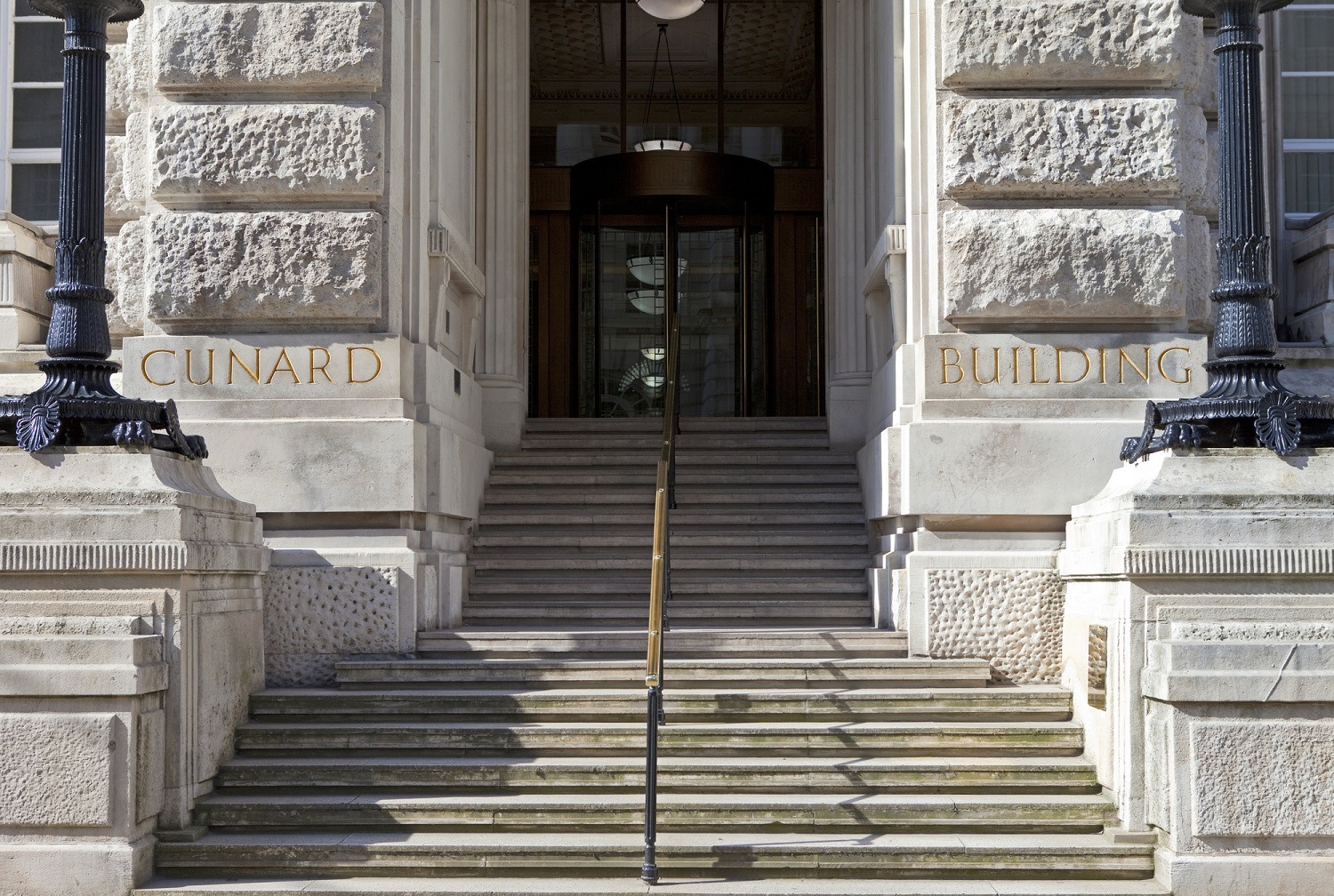
The Cunard Building sits next door to the Royal Liver Building. The architecture of this building dates back to 1914 and features influences from Italian Renaissance design. It’s constructed with around 180,000 cubic feet of Portland stone and 50,000 cubic feet of Italian marble. The building was built for Cunard Steamship Company and remained their offices until 1969.
Today, the Cunard Building is a modern office space that offers a prestigious waterfront location for businesses, conferences and events. The ground floor also houses The British Music Experience. This is a permanent exhibition that showcases some of the world’s best artists and performers from 1940 onwards.
The Port of Liverpool Building – 1900s
Last up in The Three Graces line-up is the Port of Liverpool Building. Constructed between 1904 and 1907, this was the first building in the Three Graces waterfront trio. The Mersey Docks and Harbour Board headquarters were based here up until 1994. Moving into the early 2000s saw the building get a revamp – all while keeping the Edwardian Baroque influences intact.
One of the building’s unique features is the dome inspired by an unused design for Liverpool’s Anglican Cathedral. The interior and exterior also pay homage to the city’s maritime past with small references such as anchors, compasses and bells. While this location is now primarily used by several businesses, visitors can check out the ground floor, which features a granite staircase, stained glass windows and ornate detail on the elevators. There’s also the opportunity to enjoy tea and cake at the onsite café.
Other historic Liverpool buildings include…
The Bluecoat – 1710s
The Bluecoat Building is thought to be the oldest in Liverpool. It was constructed around 300 years ago and originally homed a charity school for poorer children. It forms one of the city’s Grade I listed buildings and was founded by the rector of Liverpool, Reverend Robert Styth, and master mariner Bryan Blundell. Many merchants in the city supported the school throughout its existence.
Interestingly, the architect of the Bluecoat Building is still speculated. It is thought after recent findings that Thomas Steer, who was a dock engineer and Edward Litherland, a mason, were the original designers.
The school’s origins also have significant connections to the city’s first commercial dock, as many of the students were apprentices and worked for local shipping companies. Some also immigrated to the colonies.
In the early 1900s, the school outgrew the building and moved to new premises. At this time, a group of artists moved in and established the UK’s first art centre in 1927. While it received significant damage during the Blitz, the centre still remains after investment and redevelopment. This spot also played an important role when Liverpool was given the European Capitals of Culture status in 2008.
The Liverpool Town Hall – 1750s
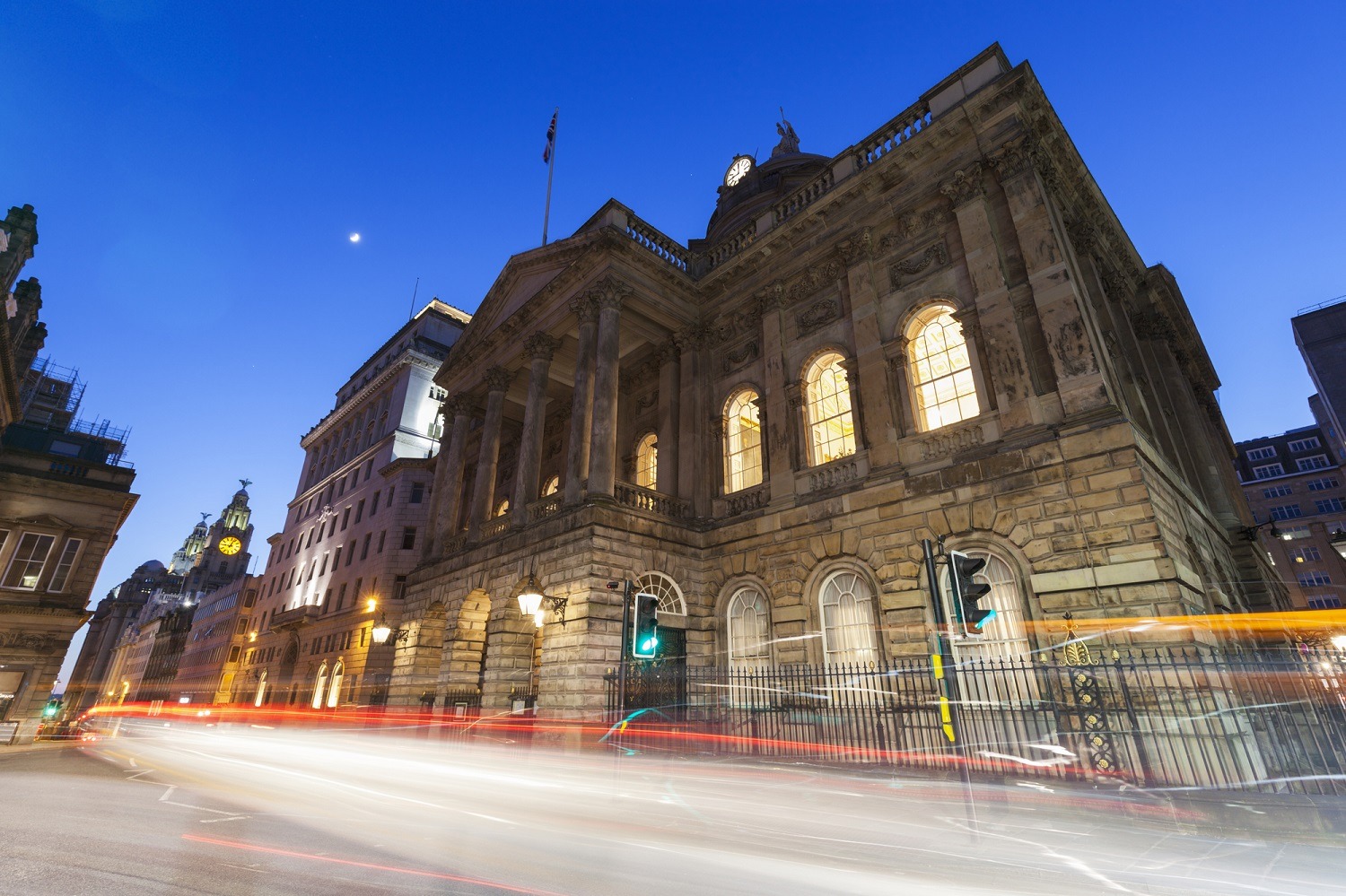
Another architectural masterpiece to admire is Liverpool Town Hall. This is the headquarters for the city’s civic matters and Lord Mayor. Constructed in the 1750s, the building was designed by John Wood and is now listed as Grade I due to its fine Georgian architecture and historical importance.
Inside, you can see the decadence and prosperity of the era. The entrance features a beautiful Minton tile floor with the arms of Liverpool decorated into the design. The walls have murals created in 1909, highlighting the history of King John’s influence in making Liverpool a free port.
The ornate nature of this building means there is a lot to see, including a decorated dome and Minerva, Goddess of Wisdom and Protector of Cities statue. The staircase is one of the building’s most prominent features and is an admired sight as soon as you step through the foyer.
The Liverpool Town Hall often plays host to events, including royal visits. The balcony was also the setting for the homecoming of the city’s iconic band, the Beatles.
Liverpool Anglican Cathedral – 1900s to 1970s!
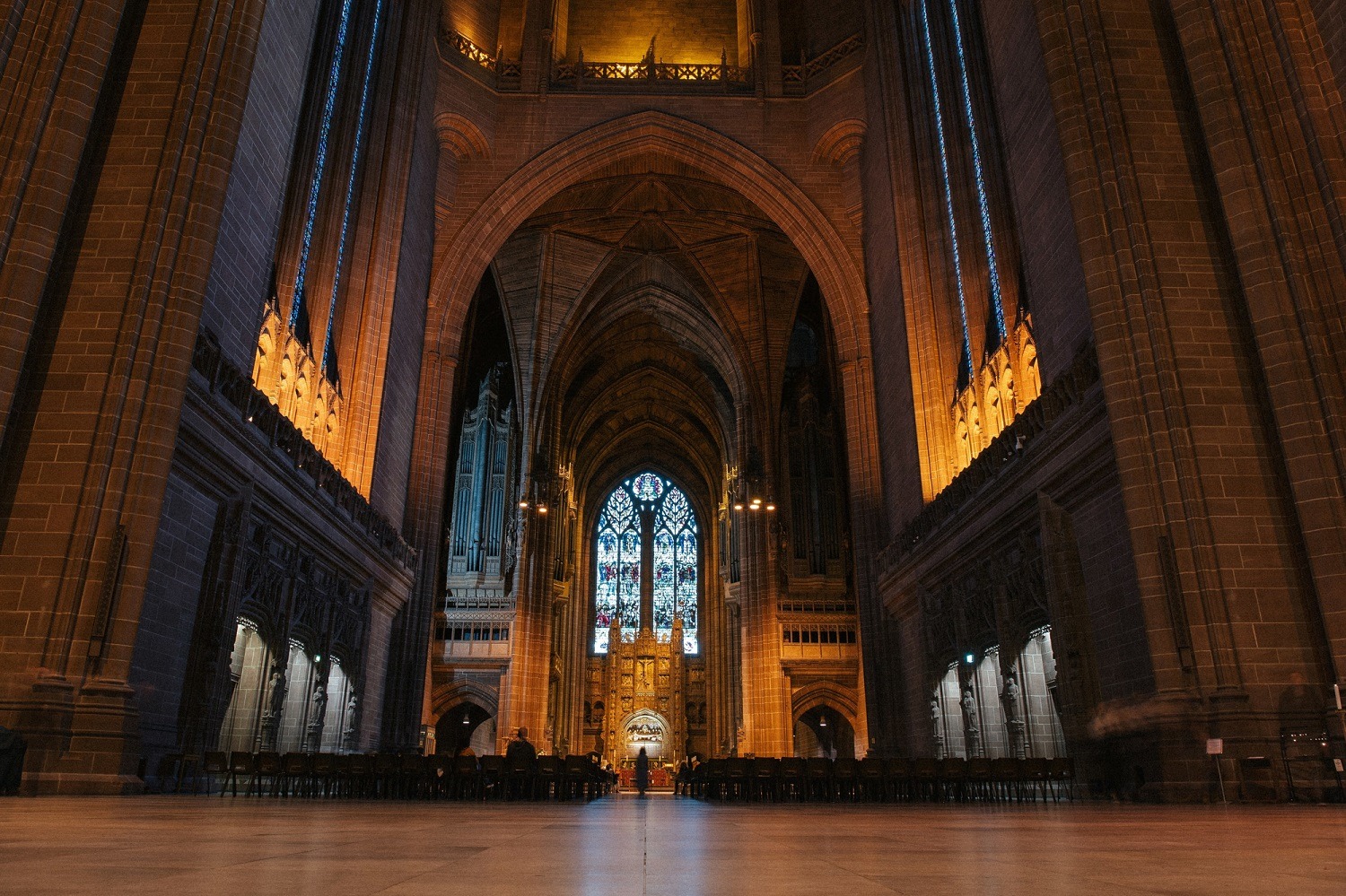
The Liverpool Anglican Cathedral is the largest in Britain and the fifth largest in Europe. Its construction spanned 74 years from 1904 and was the design of Sir Giles Gilbert Scott, the guy that created the red telephone box!
Inside the cathedral, there are several areas, such as the Nave. This is the lower section of the building, which typically sees formal occasions take place. From this position, you can see the beautiful Benedicite Window – a stained glass window over the Great West Doors of the cathedral. This window features around 200,000 pieces of glass and was created by artist Carl Edwards.
The Lady Chapel is an incredibly ornate and tranquil experience. Carvings run around the walls with a verse from St John’s Gospel. This area has its own organ, and the portrait windows with noble women in the Chapel are famous as they show women from different walks of life.
Other areas inside the cathedral include the Chapter House, Children’s Chapel, Holy Spirit Chapel and Elisabeth Hoare Gallery.
Liverpool Philharmonic Hall – 1930s
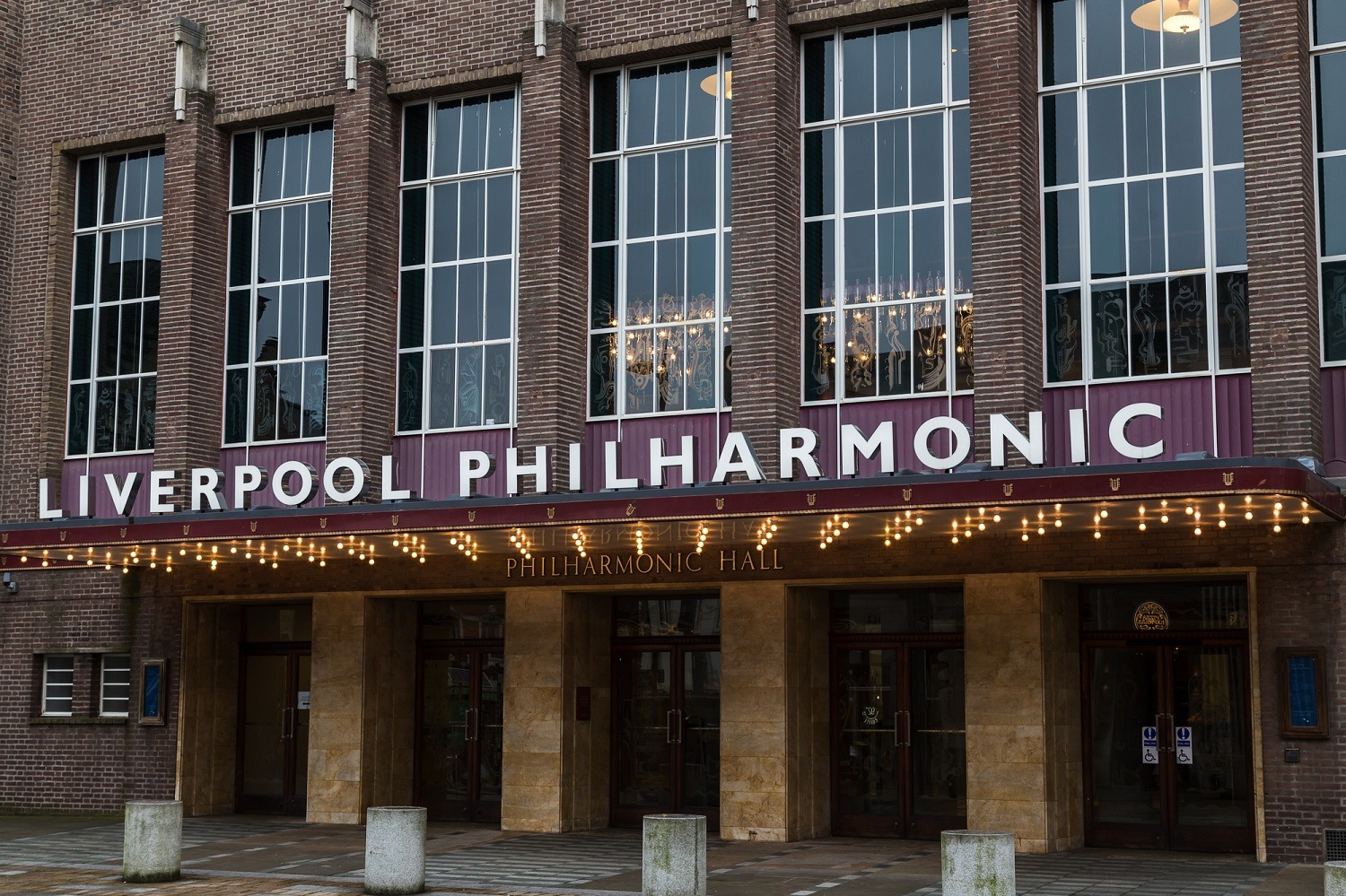
Located in the Georgian Quarter of the city, the Liverpool Philharmonic Hall is one of the oldest concert societies in the world. The building itself is art-deco style and now has Grade II listed status. The Liverpool Philharmonic Society was founded in 1840 but, at the time, didn’t have a permanent residence. However, in 1844, architect John Cunningham was brought in to design the first concert hall.
Later, in the 1930s, a fire ravaged the location and delays in rebuilding meant the new concert hall wasn’t reopened until 1939. Liverpool architect Herbert Rowse designed the new building. More recently, the building has received a modern renovation with some of its original charm kept to pay homage to the origins of the society.
Today, the Liverpool Philharmonic Hall plays host to a variety of musical acts and performances throughout the year.
Rodney Street Georgian Townhouses – 1780s
If you love Georgian architecture, then a stroll down Rodney Street is a must. This location has 60 Grade II listed buildings featuring the era’s iconic design. William Roscoe developed the street between 1783 and 1784, and it was named after George Brydges Rodney, an officer in the British Navy.
Over the years, the street homed famous names such as poet Arthur Clough. It was also the birthplace of the previous British Prime Minister, William Ewart Gladstone.
Rodney Street is renowned for its beautiful design and has been featured in several TV series and movies, including Peaky Blinders.
Albion House – 1890s
Albion House sits on the corner of James Street and The Strand just across from the Pier Head. This Grade II listed building is a commanding figure close to the waterfront. The building was constructed between 1896 and 1898 and designed by architects J. Francis Doyle and Richard Norman Shaw. The frontage is crafted in red brick and Portland stone and features impressive architecture with a prominent turret-style column on the corner of the building.
It was commissioned for the shipping company Ismay, Imrie and Company, which then became the White Star Line. This company was known for making three large liners, including RMS Titanic. It was said when they heard of the tragedy of the Titanic, the names of the deceased were read from the balcony.
Today, this building is home to a luxurious hotel and spa.
Speke Hall – 1590s
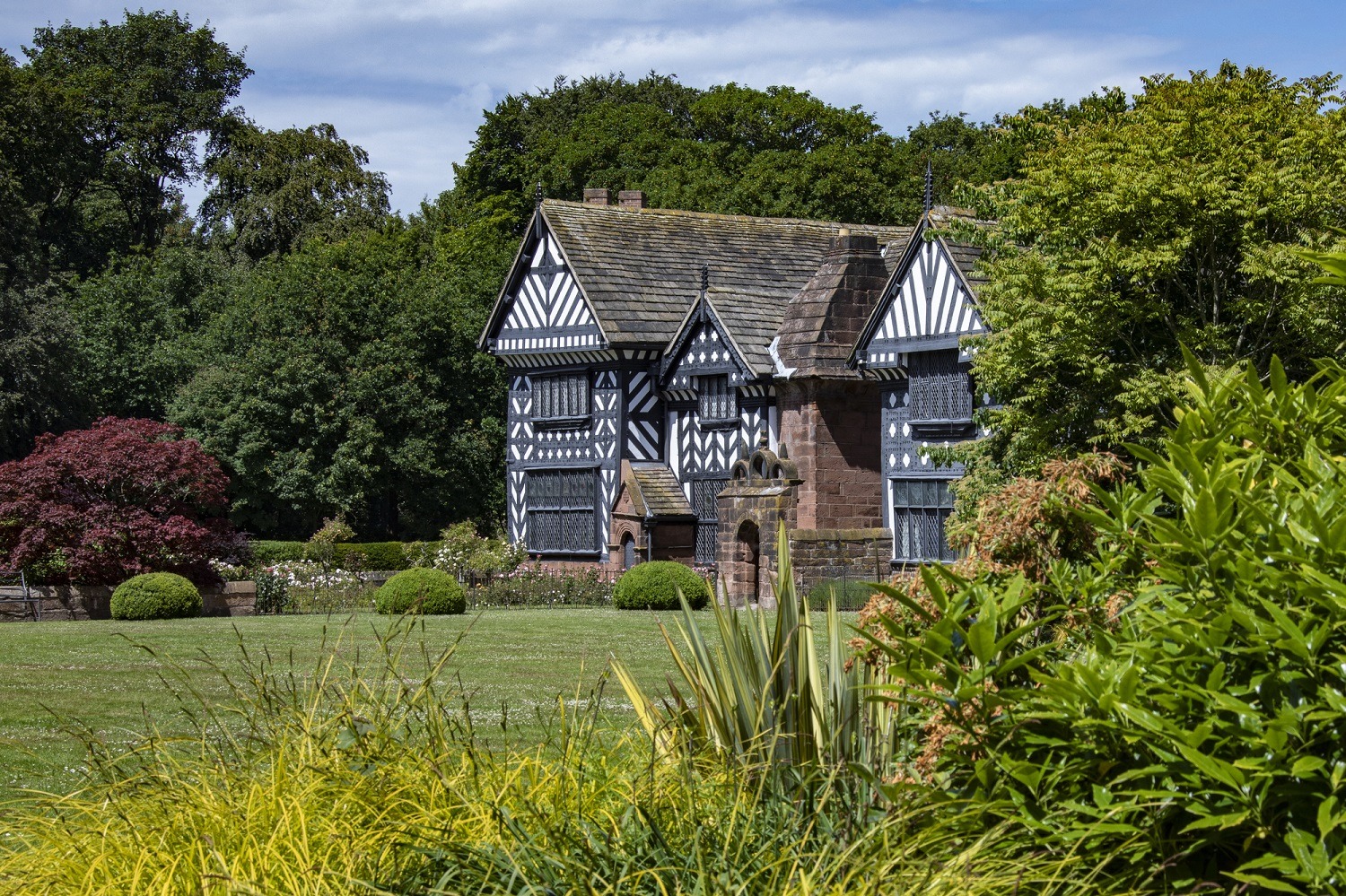
Just eight miles from the centre of central Liverpool is the historical building of Speke Hall. Now managed by the National Trust, this former Tudor House offers a rare glimpse into architecture and history dating back to the 1500s.
The inside of the house features unique collections spanning five decades of history. From oak-carved furniture to examples of early William Morris wallpaper, this old Tudor property has it all. Among the grounds, there are also two trees named Adam and Eve. These are said to be around 500 years old, and the evergreen leaves provide a beautiful contrast against the house’s features.
The house holds more incredible history dating back further. For example, you can see examples of Belemnite fossils within the stone-flagged floor dating back around 350 million years.
Liverpool Central Library and Record Office – 1860s
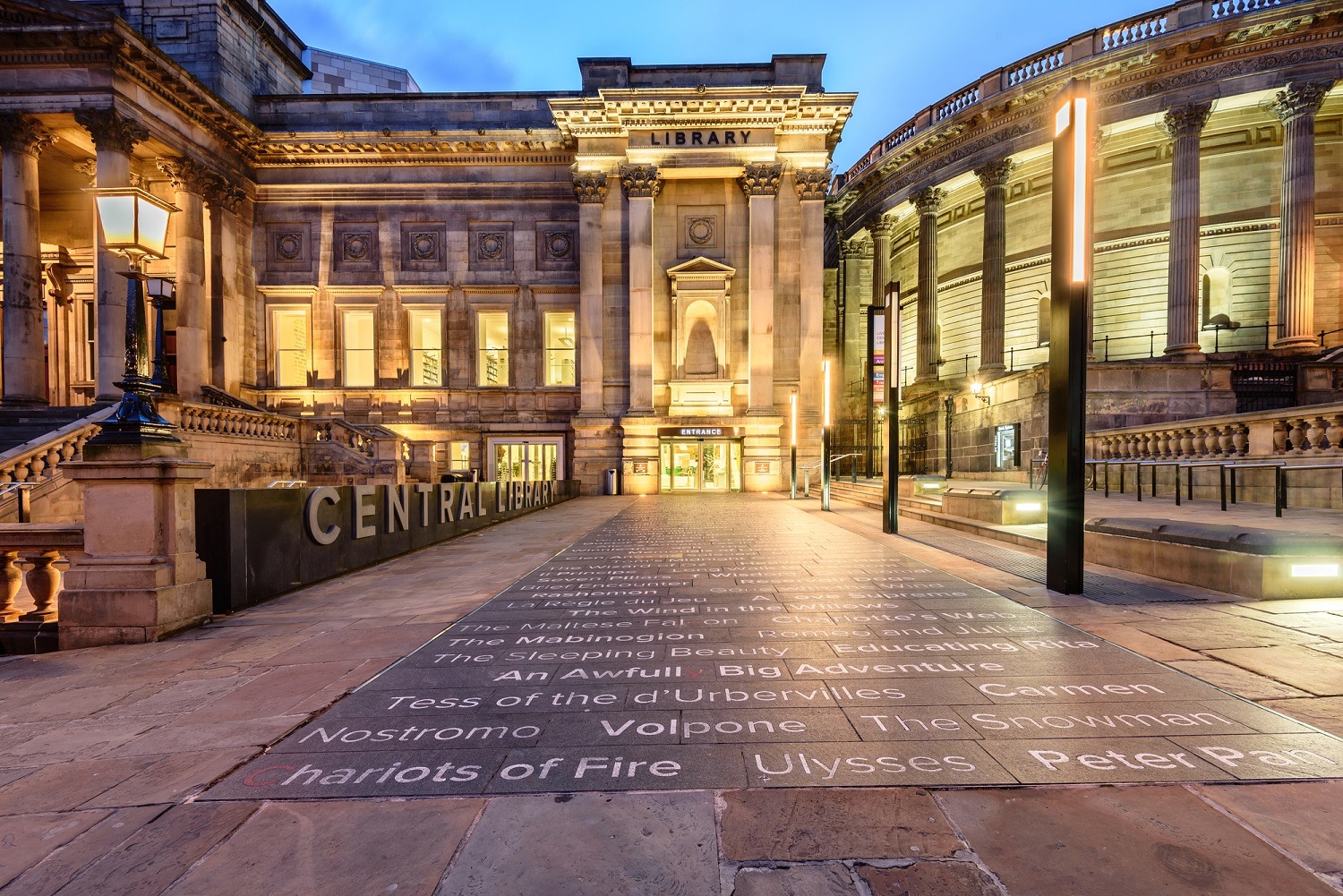
Another commanding building in the city is the Central Library and Record Office. It’s one of the biggest public libraries in the UK and was initially opened in 1860. This spot forms part of the UNESCO World Heritage Site on William Brown Street.
The architecture style is similar to that of the surrounding buildings and holds Grade II listed status. In recent times, the library has expanded and modernised. However, there has been a careful restoration of heritage influences such as the Picton Reading Room. This was first designed by Cornelous Sherlock, and the original bottle-shaped stone balusters and colonnades featuring liver birds were painstakingly restored to their former glory.
The history of Liverpool Buildings
The history of Liverpool’s buildings is vast, and there are so many impressive locations to explore. Among the older figures of the city, new construction projects are making way for modern and exciting events, exhibitions and business hubs. This makes Liverpool a key cultural, economic and pioneering centre in the UK. As portable toilet suppliers in Liverpool, we’re proud to play even the smallest part in the ever-changing landscape of this great city!


